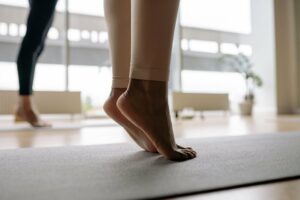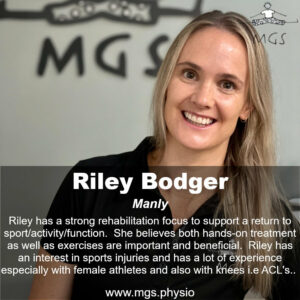
What is a Calf Muscle Strain?
A calf muscle strain happens when the calf fibres are overstretched or torn during activities that involve running or jumping. It can affect anyone, from a casual 5 km waterfront jogger to a weekend soccer player, and it often disrupts daily life, sport, and training plans.
Why it matters: After a calf injury, the muscle may not have the strength or endurance to cope with a load. Testing and rebuilding capacity are key to calf strain recovery and preventing another calf injury.
Why Assess Calf Muscle Endurance?
Calf injuries often occur in endurance sports and during repeated efforts late in a session or match. Endurance of the plantar flexors (your calf muscles) helps you:
-
Maintain running form and push-off power
-
Tolerate training volume without flare-ups
-
Reduce the risk of recurrent calf muscle strain
-
Progress your calf strain rehab with clear targets
Understanding the Calf Raise Test (Heel Raise Test)
The Heel Raise Test (HRT) is a quick clinic tool to assess calf endurance and function. It mimics the push-off phase of running without the forward momentum, giving a clean read on single-leg calf capacity.
How to Perform the Calf Raise Test Correctly
-
Set up: Stand barefoot, one foot on the floor, fingertips lightly on a wall or bench for balance (not to push).
-
Start height: Keep the knee straight. Lift the heel as high as you can by pushing through the big toe.
-
Tempo: Rise and lower at a steady rhythm (about one rep every two seconds).
-
Range: Aim to reach the same top height each rep. Avoid rocking forward or bending the knee.
-
Count: Stop when you can no longer hit the same height, you lose form, or the tempo breaks.
-
Repeat on the other side and compare.
Technique tips
-
Drive through the big toe.
-
Keep the heel lifting straight up, not rolling out.
-
Don’t use momentum; quality over quantity.
Normative Values and What They Mean
A large 2017 study by Hébert-Losier et al. found the Heel Raise Test is highly reliable and provided age- and sex-adjusted reference values. As a guide:
-
~30-year-old males: ~32–33 single-leg calf raises per side
-
~30-year-old females: ~26–28 per side
Scores are influenced by age, sex, BMI, and activity level. Results below your matched norm may indicate reduced endurance and a higher risk of future calf injury. That makes the test useful for setting rehab targets and tracking calf injury recovery over time.
Reference:
Hébert-Losier, K., Wessman, C., Alricsson, M., & Svantesson, U. (2017). Updated reliability and normative values for the standing heel-rise test in healthy adults. Physiotherapy, 103(4), 446–452. doi:10.1016/j.physio.2017.03.002
How the Calf Raise Test Helps with Injury Recovery
-
Baseline: Identifies current endurance on each leg after a calf muscle strain.
-
Targets: Provides a clear rep goal for your program (e.g., progress toward your age/sex norm).
-
Progress checks: Repeat every 2–4 weeks to confirm your calf injury recovery is on track.
-
Return-to-run criteria: Combine with pain-free hopping and graded running to reduce re-injury risk.
Tips for Improving Calf Strength and Endurance
Early rehab (pain-guided)
-
Isometrics: 3–5 sets of 30–45 sec holds (heel just off the floor), 1–2×/day.
-
Seated calf raises: Light–moderate load to reintroduce tolerance.
Build phase
-
Standing double- to single-leg calf raises: 3–4 sets of 12–20 reps, progress range and control.
-
Heavy calf raises (straight-knee + bent-knee): 3–5 sets of 6–10 reps to target both gastrocnemius and soleus.
-
Endurance sets: 1–2 sets to near-fatigue to lift your HRT score.
Power and return-to-sport
-
Hops and skips: Low → moderate plyometrics (pain-free).
-
Run progressions: Walk–jog → continuous easy runs → strides/tempo as advised.
General tips
-
Train both straight-knee (gastrocnemius) and bent-knee (soleus) variations.
-
Space heavy sessions 48–72 hours apart.
-
Match weekly load increases to symptoms and function (10–20% rule as a guide).
When to See a Physiotherapist for Calf Injuries
-
Pain persists, or you can’t walk briskly without a lim,p after 48–72 hours
-
A sudden pop, significant swelling, or bruising (possible higher-grade strain)
-
Marked left–right difference on the Heel Raise Test
-
Recurrent tightness late in runs or matches despite rest
A physio can assess tear severity, tailor your calf strain rehab, guide loading, and progress you safely back to sport.
CALL NOW TO BOOK YOUR APPOINTMENT
References
Hébert-Losier, K., Wessman, C., Alricsson, M., & Svantesson, U. (2017). Updated reliability and normative values for the standing heel-rise test in healthy adults. Physiotherapy, 103(4), 446–452. doi:10.1016/j.physio.2017.03.002
Author –  Riley Bodger (MGS Manly)
Riley Bodger (MGS Manly)
Riley has a strong rehabilitation focus to support a return to sport/activity/function. She uses both hands-on treatment as well as exercises, as she believes both are important and beneficial.
Riley has an interest in sports injuries and has a lot of experience especially with female athletes and also with knees i.e ACL’s.
Outside of work Riley enjoys spending time with friends and family, loving her weekend coffees and walks with friends. Being by the water is important to her, no wonder she has settled in so well here in Manly.
Click here to learn more about Riley.
FAQs for Calf Raise Endurance
What is the calf raise test used for?
The calf raise test measures calf muscle endurance and strength. Physiotherapists use it to assess recovery from calf injuries, detect muscle imbalances, and guide return-to-sport decisions.
How many single-leg calf raises should I be able to do?
Most healthy adults should perform 26–33 single-leg calf raises, depending on age and sex. Lower scores may indicate reduced endurance or increased injury risk.
Can doing calf raises help recover from a calf strain?
Yes. Calf raises are often used in rehab programs to rebuild strength and endurance after a calf strain. Start with bodyweight exercises and progress gradually.
What causes a calf muscle strain?
Calf strains are usually caused by sudden overstretching or fatigue during running, jumping, or pushing off forcefully. Weak or tired muscles are more prone to injury.
When should I see a physiotherapist for a calf injury?
See a physiotherapist if calf pain lasts more than a few days, worsens with activity, or limits your movement. Early treatment can speed up recovery and prevent re-injury.
Is the calf raise test the same as the heel raise test?
Yes, the calf raise test and heel raise test refer to the same assessment. Both measure calf muscle endurance by counting how many single-leg heel raises you can perform before fatigue.
